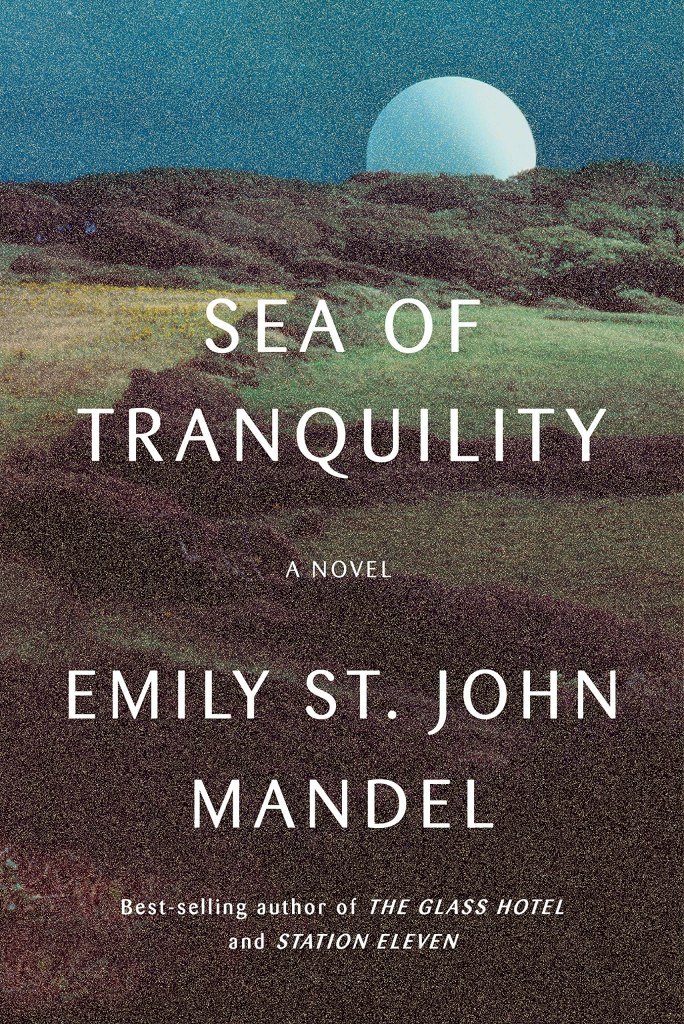
In order to truly appreciate Emily St. John Mandel’s new novel, a reader should be familiar with her two previous efforts: the groundbreaking pre-COVID pandemic novel, Station Eleven, and 2020’s The Glass Hotel, which explores of the global financial crisis of 2008 and features a Bernie Madoff–like scam artist.
By comparison, the storylines of those two novels were straightforward. Sea of Tranquility zips through space and time, though it is primarily set in four main periods: the earlier 20th century (1912), the present (2020), the distant future (2203), and the really distant future (2401). This science fiction element allows for plausible time travel, which turns out to be the key that unlocks the apparent disconnections between the four settings.
Each time period features a major character. Edwin St. John St. Andrew (based on one of the author’s great-grandfathers), has been exiled to British Columbia from England for anti-colonial remarks at a dinner party. He is the first to experience the temporal anomaly at the center of the book: “a flash of darkness, like sudden blindness or an eclipse. He has an impression of being in some vast interior, something like a train station or a cathedral, and there are notes of violin music, there are people around him, and then an incomprehensible sound.” This jumbled vision appears again in the 2020 strand of the novel in a video created by the artist brother of a friend of Mirella, the 21st-century protagonist. Olive Llewellyn, St. John Mandel’s doppelganger, who is embarking on the “last book tour on Earth,” is the most fully drawn character. And then there is Gaspery-Jacques, a shadowy figure from the “Night City” moon colony, whose detective work ties everything together.
Much like St. John Mandel’s Station Eleven, Olive’s pandemic novel, Marienbad, has benefited from booming sales after an actual pandemic strikes earth. Moreover, just as Sea of Tranquility poaches characters from St. John Mandel’s earlier work, Marienbad supplies significant literary references to the characters in Sea of Tranquility. If it all sounds a bit Escheresque, St. John Mandel’s calm and steady prose keeps the complex story moving forward without too much confusion.
The book’s title refers to one of the large basaltic plains on the moon, home to the first human colony, but the idea of tranquility amid chaos also echoes throughout the novel, as in this moment when Olive is playing with her 5-year-old daughter: “This is the strange lesson of living in a pandemic: life can be tranquil in the face of death.” Olive has this thought in her home on the moon after musing that “A life lived under a dome, in an artificially generated atmosphere, is still a life.” Those words resonate with the book’s final reveal, a disclosure in keeping with the gently melancholy mood of one of Marienbad’s central lines: “No star burns forever.”
For the moment, though, St. John Mandel’s star is burning quite brightly. Sea of Tranquility and The Glass Hotel have been signed by HBO as series follow-ups to the serialization of Station Eleven. There’s something quietly consoling about the writing of this youngish Canadian writer that we seem to need now that the world we thought we knew is falling apart.
This review originally appeared in the California Review of Books.
Support the Santa Barbara Independent through a long-term or a single contribution.




You must be logged in to post a comment.